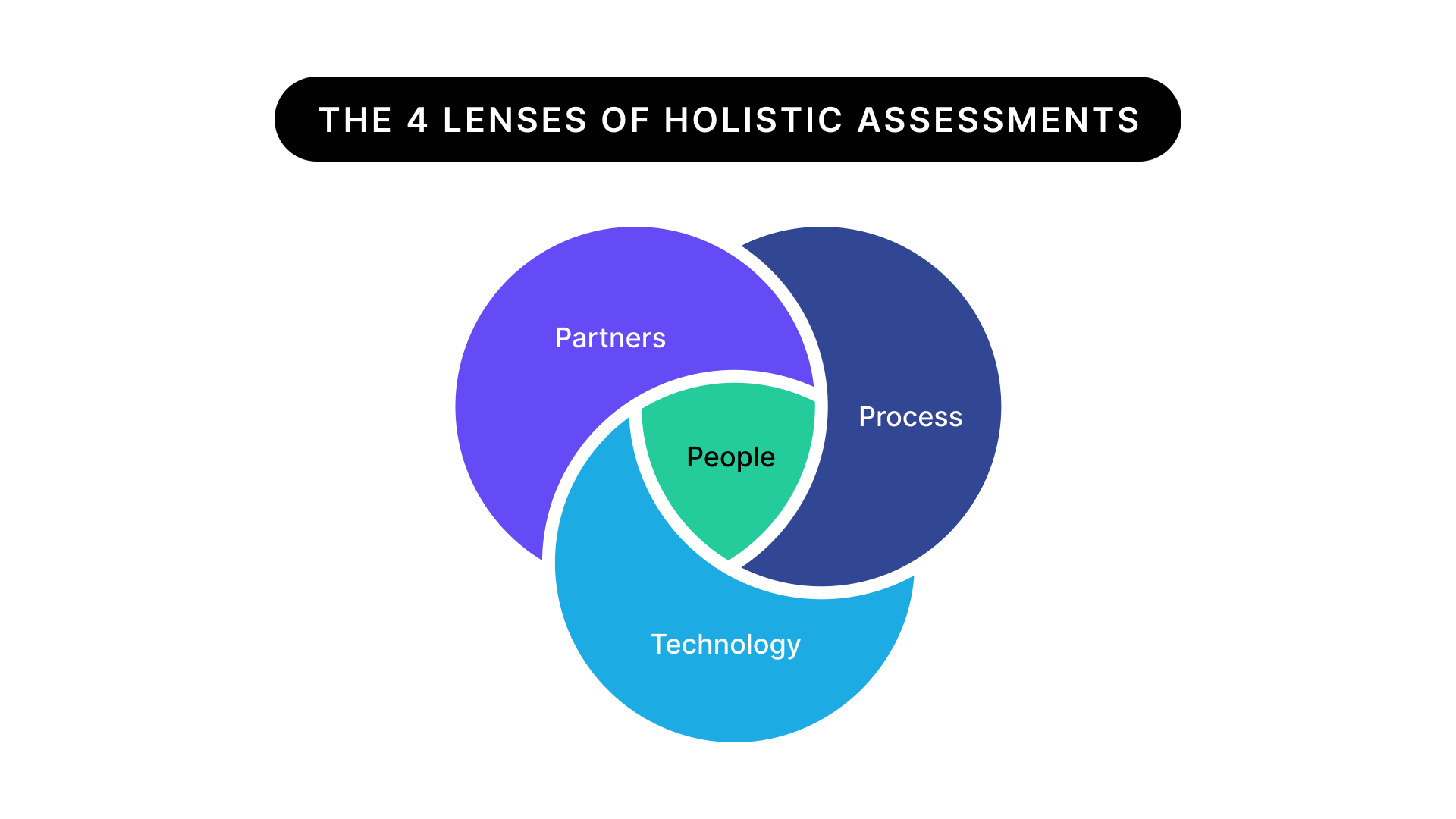Four Lenses
Through our work and this documentation, we have considered the perspectives of four dimensions that are critical to the effective and efficient facilitation of value for all the stakeholders in the form of products and services: people, process, technology, and partners.

Venn diagram showing the interconnectedness of the four lenses
People
Through the lens of “People” we have focused on understanding the stakeholder through the process of designing, developing, and deployment a new technology-based solution in the ICT4D context. We sought to understand who the different stakeholders are and their roles, the digital literacy needs of people engaging in this process, and how the technology impacts the local communities where it is to be deployed. We also identified key threats to success that can help all people throughout the process avoid critical pitfalls.
.png)
Process
In the “Process” section, we focus on our approach to holistically assessing ICT4D technology solutions by extrapolating our experience performing the same in the CRVS space. We aim to provide a detailed guide for anyone to perform a similar technical quality assessment in the future. We cover specific areas of concern and risk to investigate and understand, from the source code, to the architecture, and ultimately the deployment into a production environment. We also consider how the project, team, and community behind any technology is created, nurtured, and supported.

Technology
Onto the focus of “Technology”, where we introduce our approach to launching new technology solutions from the development phase into a secure, resilient production deployment. We include best practices related to “Developer Secure Operations” (DevSecOps) and Continuous Iteration/Continuous Deployment approaches, and why they can be useful in this context. We also share our approach to ongoing vulnerability assessment and penetration scanning, beyond just a single one time “audit”. Through this, we aim to provide a set of strategies that can provide confidence and greater understanding of a very complex set of moving pieces.

Partners
Lastly, in the area of “Partners”, we share our ideas about what makes a good partner when choosing a technology solution. We discuss both technical acumen, as well as the equally important questions of positive indicators around sustainability, communication, and culture. We share experiences we have had in our own work assessing eCRVS solutions, and how these green or red flags can help you make decisions about which partners, vendors, solutions, and organizations you choose to become dependent upon.
